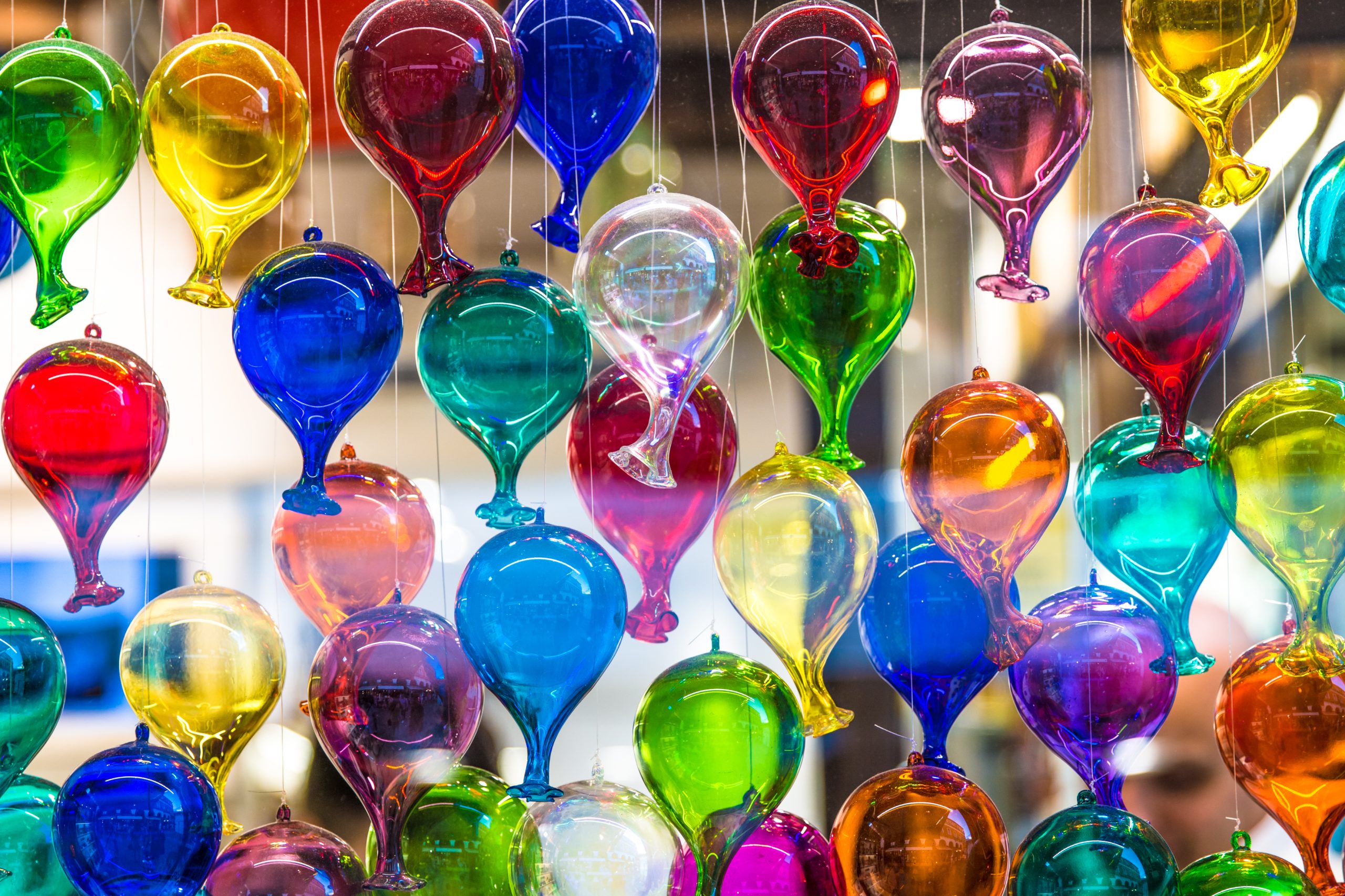When we talk about Murano we can only think of glass and its ancient art handed down from father to son.
In glass processing there are specific terminologies to indicate each type of technique or characteristic that identifies it, which determines its specificity, which attributes its origin of production.
Here are some terms that make up the real glass glossary.
Aventurine: particular type of glass that is obtained with a very unique process which consists in adding certain quantities of raw materials after the melting process, so that the copper can coagulate into small lumps and be shiny.
Baloton: process that allows to incorporate, at regular distances, some air bubbles which, with the subsequent laying of a further layer of glass, remain trapped in the glass, but remain clearly visible, forming an internal decoration, without consequences for the final product.
Bluino: it is a clear and compact transparent glass with a slightly blue color. It is obtained by adding cobalt to the preparation mixture. Particularly suitable for decorating classic Murano chandeliers, it is often used in the goblets and pedestals of blown glasses.
Chalcedony: The main mineral for the preparation of Chalcedony is silver, so named for its resemblance to a variety of hard stone called natural chalcedony, the zoned agate.
It is an opaque glass with veins of various colors on a dark background, particularly difficult to prepare due to the particular combination of the various minerals that compose it.
Blow pipe: it is perhaps the instrument that, visiting a furnace, we may have seen used.
It is a hollow tube of ferrous material, with which one draws into the crucible of the furnace to remove the part of molten glass that will subsequently be processed.
Chemist: is the name given to the person who prepares the mixture of silica sand with the addition of minerals that will melt in the crucibles for the preparation of the molten glass paste.
This is a fundamental figure because he must have the knowledge of the right amount of material to use for the various games, but not only is he the master who gives life to all the achievements.
Crystal: Silica sand with very few mineral intrusions in its composition. A few grams of iron oxide per kilo of sand are enough to give the glass a green - blue color.
It is important to remember that the percentage of soda affects the transparency and brilliance of the glass produced.
Based on the percentage of soda added to the components, the short glass is the one with the least quantity and the long glass the one with the most.
Filigree: it consists in the insertion in a transparent glass (crystal) barrel of a colored core, often white, which is immersed, in the central part, of the barrel.
When more reeds are twisted together, particular shapes are obtained that look like embroideries inside the glass.
Source: Venicewiki.org



